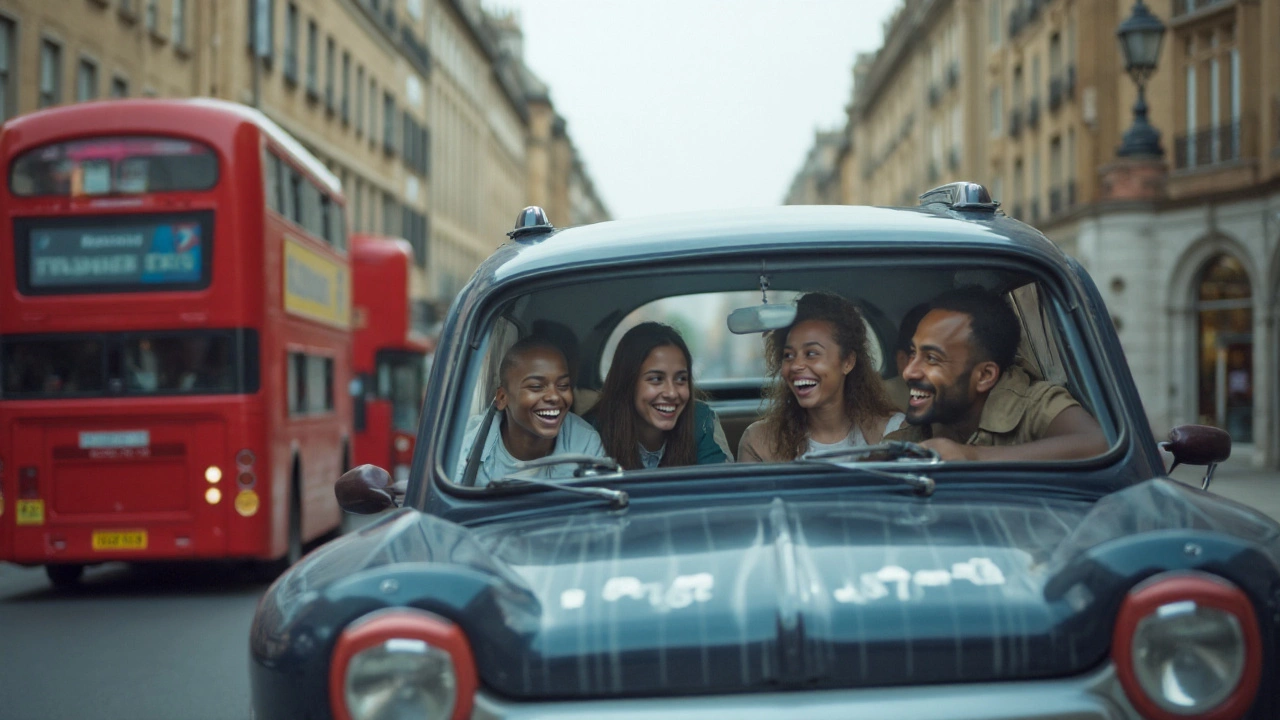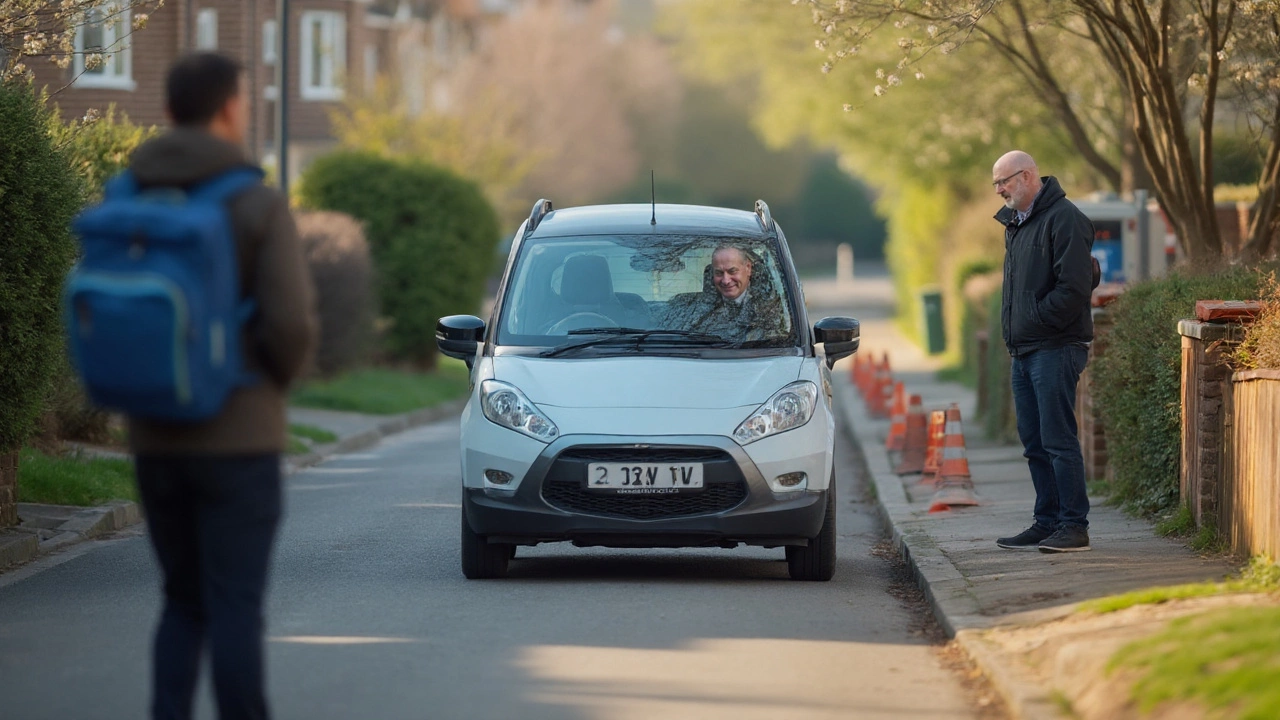You’re probably picturing that nerve-wracking feeling when you climb into the examiner’s car—the silence, every move under the microscope, your pulse thumping like a subwoofer. Here’s a twist: passing your driving test fast doesn’t mean cutting corners or sheer luck. It means knowing where most fail, hacking your habits, and nailing the skills examiners want to see. Passed on the first go? Yes, that’s totally doable, and honestly, it’s less about memorizing obscure rules, more about building rock-solid habits and confidence way before the test day.
What Examiners Are Really Looking For
First, let’s rip away the mystery: every examiner has a checklist, and nearly all of them care far less about perfection and much more about consistent, safe, and confident driving. Let that sink in. Examiners mark down nerves only if they spiral into unsafe habits, like forgetting to check mirrors or missing a stop sign because you’re too flustered. In New Zealand, for example, about 40% of people fail their driving test on the first try, mainly for not giving way correctly, not scanning intersections, or making iffy decisions at roundabouts. If you want to ace your test fast, figure out the three or four moves your local instructors say are top fail reasons—and drill them until they’re muscle memory.
Another key: examiners can smell rehearsed “test routes” a mile away. They’re fine if you know the roads, but they’re checking for actual skills: do you use your mirrors properly? Do you signal correctly? Are your head checks obvious and not just quick twitches? They don’t want to see you hesitating or second-guessing basic moves, especially with merging lanes, parallel parking, or right turns at busy intersections. Don’t just look like you know what you’re doing—actually know it.
The stereotype is that parallel parking is the bogeyman, but in Wellington, most fails come from not reading the flow of traffic at roundabouts or failing to give way. So, while you definitely want to practice your parking parallel to the kerb, split your time. Make sure you get comfortable at busy intersections, double-checking mirrors, and handling hill starts under pressure. That’s how you make yourself bulletproof in an examiner’s eyes.
Smart Preparation: Training Hard, Training Right
Cramming the night before your test? It’s tempting, especially if a mate swears they passed after a single whiz around the block. Here’s where you outsmart everyone: space out short, focused practices every day for two weeks leading up to your test. The secret weapon is spaced repetition. Practicing fifteen minutes a day beats a four-hour binge—your confidence and reflexes settle in and stick longer. Grab a calendar, map out practice sessions: one day backing into parking bays at a quiet supermarket lot, another morning cruising through roundabouts, then an afternoon weaving through traffic and practicing smooth stops. Change up the weather, too—if you’ve never driven in rain or heavy wind, organize a session in less-than-perfect conditions. Nothing makes you feel readier than beating Wellington’s notorious gusts and drizzle.
Have someone sit in with you who’s been through the test process—not just a parent who panics every time you approach a yellow light. Actual instructors, or even an older friend who’s passed recently, can grill you on the latest examiner “pet peeves” (it’s not always what the rulebook says). Record yourself driving on your phone to spot nervous tics or missed mirror checks. The best feedback is the stuff you don’t notice in the moment.
Mix up mock tests, too. Set them up to be tougher than the real thing. Time yourself with a mate using the actual test sheet printed from your local agency. Miss a step? Sit down that night and rewatch the test: find which skills need sharpening. By graduation day, the real exam will feel easier than your own setups.

Perfect Practice for Trouble Spots
Let’s get specific: create a playlist of skills barely anyone talks about, but which trip up heaps of learners. Take hill starts, for instance. The number one moment when your adrenaline will spike during the test is the dreaded uphill stop-and-go. Wellington’s hills are as unforgiving as they come. Start dead on the line, count to five, and see if you roll back. Practicing on Aro Street or Wilton Road at 5 p.m. (with real pressure behind you) will prep you way better than afternoon lulls on flat suburban streets.
Reverse parallel parking isn’t just about angling the car and turning the wheel. Make a point of getting out and checking your finished position after every try. Like it or not, examiners care if you’re parked legally: wheels straight, no giant distance from the kerb, and not sticking too far out. Don’t forget the three-point turn either—so many fail it by not doing full head checks in both directions for every step. For the test, exaggerate your checks, even turning your shoulders so the examiner can’t miss it.
Lastly, handle intersections like a pro. Stop way before your line of sight is blocked—lots of fails are for not stopping early enough to actually see oncoming traffic. Practice right turns across traffic, double-checking for that speeding courier or silent Prius. These real-world, high-stakes moments build the muscle memory that powers you through the real thing fast.
What You Need to Know On Test Day
Panic comes knocking hardest the morning of your test. Swallow that fight-or-flight stuff right away: eat a steady breakfast, get moving, and don’t cram unless it’s just a quick glance over your “fail list.” Wear comfy shoes. Bring your learner’s licence, your logbook, and arrive at least 20 minutes early, so traffic or nerves don’t turn into a mad rush.
If you can, opt for a test slot before lunch—statistically, early afternoon tests have higher pass rates because roads are a bit less frantic and examiners aren’t in a hurry to finish the day. Chat to your examiner. Seriously. A simple “Morning!” or “Hi there!” takes you from anonymous to memorable. It won’t technically help your score, but making a normal human connection lowers your nerves, and a relaxed driver always looks more competent.
When you get into the car, set up your mirrors and seating straight away, even if you did it before. Examiners watch to see if you care about safety basics. Drive like you’re showing a foreign visitor why Kiwis are known for courteous, confident handling—don’t take silly risks or try to impress with tiny gaps or quick overtakes. Smoothness wins over speed, every time.
Here’s a quick cheat sheet for the day:
- Signal every time you’re meant to—don’t assume just because no one’s watching, it’s safe to skip.
- Make every mirror and head check obvious.
- Stop with both feet (for manual) or full brake for automatics—hovering lets nerves creep in.
- If you make a mistake, don’t freeze. Take a breath, check your mirrors, and safely fix it if you can. Examiners love composure over perfection.
Below is a real stat breakdown from NZTA’s 2024 data on fail reasons. Recognize the patterns here?
| Fail Reason | % of Fails |
|---|---|
| Did not give way correctly | 26% |
| Poor observation at intersections | 22% |
| Lack of mirror checks | 18% |
| Speeding or going too slow | 15% |
| Parking errors | 9% |
| Signalling errors | 8% |
| Other | 2% |

Pro Tips and Fast-Track Shortcuts
Boring drills aren’t the answer if you want speed. Think like a smart test taker. Identify your “weakest links” first—ask your instructor or use self-recorded footage. Hammer on just those skills for a week, then switch up to full mock tests at the real test venue. This rapid feedback means your whole skillset catches up faster than endless “general practice.”
Know your rules backwards, but focus on what actually gets marked. For many in Wellington and Auckland, roundabouts and merging trips up most candidates—practice these at peak commuter times so you aren’t shaken by fast traffic or tight gaps. If you’re struggling with nerves, there are proven psychological hacks: muscle memory from repetition, visualization (imagine yourself passing clear as day), and box breathing (four seconds in, hold for four, exhale for four, hold for four—repeat as needed).
If you’re on a tight deadline—say your learner’s about to expire or a job depends on quick results—intensive driving courses can bundle everything into a few turbocharged days. These are popular in the UK and catching on in NZ. The best ones are two to five days long with 3-4 hours per day of driving, ending in a test. Instructors focus on streamlining your mistakes so every hour counts. Don’t waste time just “getting hours”—get feedback, fix what matters, then retest yourself with tougher conditions. Sometimes the fastest way to pass isn’t to drive more, but to drive smarter.
One last thing: don’t get hung up on myths. No, examiners aren’t out to “fail a quota” for the day. No, fancy cars don’t help. And don’t be thrown off if you get a grumpy examiner—the system’s pretty standard, so your attitude and prep are what count. Work on the fastest way to pass driving test by building real habits, practicing with high-stress scenarios, and making mistakes when it won’t cost you. That’s real-world prep, and it gets you across the line, faster than shortcuts or wishful thinking.

